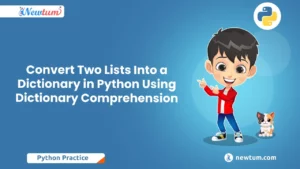In today’s digital age, data is more important than ever. To make sense of it, we turn to SQL, or Structured Query Language, a powerful tool for managing data in databases. One crucial aspect of SQL is the logical operators: AND, OR, and NOT. These operators allow you to filter and refine your data queries based on specific conditions, ensuring you get precisely the information you need. Curious about how this works? Don’t worry! Whether you’re crunching numbers or sifting through customer info, mastering SQL Logical Operators; AND, OR, NOT, can make all the difference. Let’s dive in and explore their magic step by step.
What are Logical Operators in SQL?
In SQL, the WHERE clause is used to filter records based on specific conditions. It helps narrow down the results from a database table by including only the rows that meet the given criteria. Without the WHERE clause, SQL queries return all records from a table, which may not always be useful.
Logical operators play a major role in enhancing the filtering power of the WHERE clause. These operators follow Boolean logic, meaning they return results based on whether a condition is TRUE, FALSE, or UNKNOWN. The three primary logical operators in SQL are:
- AND – All conditions must be true
- OR – At least one condition must be true
- NOT – Reverses the result of a condition
These operators allow you to combine multiple conditions and build more precise queries. Whether you’re retrieving customers from a certain city and over a certain age, or excluding specific product types, logical operators help you control what data is retrieved.
In short, you use logical operators when:
- You need to filter records based on multiple conditions
- You want to exclude certain rows from the results
- You want flexibility and precision in your database queries
Understanding these operators is essential for writing powerful SQL queries that fetch exactly the data you need.
SQL AND Operator
The AND operator in SQL is used when you want all specified conditions to be true for a row to be included in the result. It’s one of the most commonly used logical operators to combine multiple filters in a WHERE clause.
Syntax:
SELECT * FROM table_name WHERE condition1 AND condition2;
Example:
Let’s say you have a table called Employees with the following columns: Name, Department, and Experience.
You want to find employees who work in the IT department and have more than 3 years of experience.
SELECT * FROM Employees WHERE Department = 'IT' AND Experience > 3;
Output:
This query will return only those employees who satisfy both conditions:
- Their
Departmentis'IT' - Their
Experienceis greater than 3
If either condition is false, that row will be excluded from the result.
Use Case:
Use the AND operator when you need precision. For example:
- Finding products that are in stock and on sale
- Selecting students who scored above 90 in both math and science
The AND operator helps you refine your query and make sure that only the most relevant results are shown.
SQL OR Operator
The OR operator in SQL is used when at least one of the conditions must be true for a row to be included in the result. It gives you more flexibility when filtering records.
Syntax:
SELECT * FROM table_name WHERE condition1 OR condition2;
Example:
Imagine a table named Customers with columns like Name, City, and MembershipStatus.
You want to find customers who either live in New York or have a Premium membership.
SELECT * FROM Customers WHERE City = 'New York' OR MembershipStatus = 'Premium';
Output:
This query will return:
- Customers from New York, even if they don’t have Premium membership
- Customers with Premium membership, even if they’re not from New York
As long as one condition is true, the row is included in the result.
Use Case:
Use the OR operator when you want to broaden your filter and include more records. Examples:
- Products that are either low in stock or discontinued
- Students who scored above 90 in math or science
The OR operator is great for when you want either/or conditions in your SQL queries.
SQL NOT Operator
The NOT operator in SQL is used to exclude records that meet a certain condition. It reverses the result of a condition—so if a condition is true, NOT makes it false, and vice versa.
Syntax:
SELECT * FROM table_name WHERE NOT condition;
Example:
Let’s take a table called Orders with columns like OrderID, Status, and CustomerName.
You want to find all orders that are not yet delivered.
SELECT * FROM Orders WHERE NOT Status = 'Delivered';
Output:
This query will return all rows where the Status is not equal to 'Delivered', such as 'Pending', 'Processing', or 'Cancelled'.
Use Case:
Use the NOT operator when you want to exclude specific values or conditions. Common use cases include:
- Excluding customers from a specific city
- Ignoring rows with null or unwanted values
- Filtering out products that are not in a certain category
Tip:
Always be cautious with NOT in more complex conditions. It’s a good idea to use parentheses to make your logic clear, especially when combining NOT with AND or OR.
Combining AND, OR, NOT
In real-world SQL queries, you often need to use more than one logical operator to define complex conditions. Combining AND, OR, and NOT gives you the flexibility to fine-tune your query results.
But when using them together, it’s important to understand operator precedence and use parentheses to control the logic flow.
Operator Precedence (Default Order):
NOTANDOR
This means SQL will evaluate NOT first, then AND, and finally OR—unless you use parentheses to change the order.
Example:
You have a Students table with columns: Name, Grade, and City.
You want to select students who are:
- From Mumbai
- AND have a grade above 85
- BUT exclude anyone from City = ‘Navi Mumbai’
SELECT * FROM Students WHERE City = 'Mumbai' AND Grade > 85 AND NOT City = 'Navi Mumbai';
To make this more readable and prevent logical errors, use parentheses:
SELECT * FROM Students WHERE (City = 'Mumbai' AND Grade > 85) AND NOT (City = 'Navi Mumbai');
Another Example (Using OR with AND):
SELECT * FROM Employees WHERE Department = 'IT' AND (Experience > 5 OR Position = 'Manager');
This query selects:
- Employees in the IT department
- Who either have more than 5 years of experience or are managers
Best Practices:
- Always use parentheses when combining operators to make your queries easy to read and understand.
- Double-check logic when using
NOT, especially withOR. - Break down complex queries into smaller pieces during testing.
Combining logical operators allows you to write powerful SQL filters that return only the most relevant and meaningful results.
Real-Life Uses of SQL Logical Operators; AND, OR, NOT
Sure, diving into SQL logical operators isn’t just about learning syntax; it’s about understanding how these operators solve real-world problems. Here’s how companies use them:
- Filtering Customer Profiles
Imagine a marketing team at a retail company wants to identify customers who are both loyal and have high spending habits. Using SQL Logical Operators, they can combine conditions: “Customers who made more than 10 purchases AND spent over ₹50,000 last year.” This allows the team to target promotions more effectively. - Optimizing Inventory Management
An e-commerce company might need to manage its inventory efficiently. They can use SQL Logical Operators like OR and AND to identify products with “low stock OR are frequently returned AND are of high value.” Prioritizing such products ensures they keep popular items available while minimizing the risk of stocking underperforming items.
- Enhancing Fraud Detection
A bank can use NOT with AND to detect fraudulent activities. For example, flagging transactions that are “NOT usual AND have large amounts” can trigger reviews for possible fraud. This use of SQL Logical Operators safeguards customer accounts, maintaining trust and security. - Survey Data Analysis
A survey company analyzing responses might use NOT and OR to filter insights. They can identify respondents who “did NOT answer question 5 OR gave ratings less than average for customer service.” This analysis helps in understanding customer dissatisfaction.
Test Your Knowledge
Here is the paragraph explaining five quiz questions formatted as an ordered list:
- Which operator would you use to find records that meet all specified conditions simultaneously?
- A) OR
- B) NOT
- C) AND
- What does the OR operator do in SQL?
- A) Combines two or more conditions and returns results if either condition is true
- B) Eliminates null values
- C) Negates a condition
- If you want to exclude a specific condition’s results, which operator should you use?
- A) OR
- B) AND
- C) NOT
- In the query “SELECT * FROM students WHERE age > 18 AND city = ‘Delhi’;”, what does the AND operator imply?
- A) Only students younger than 18
- B) Students older than 18 in Delhi
- C) All students
- Which of the following is true for the NOT operator?
- A) It returns the opposite of the specified condition
- B) It combines multiple conditions
- C) It multiplies values
Conclusion
SQL Logical Operators; AND, OR, NOT are fundamental tools that enhance your ability to filter and retrieve data. They’ve offered you flexibility and precision needed for effective data queries. Ready to take your skills further? Visit Newtum for informative blogs and courses. Your journey to becoming an SQL guru starts now!
Edited and Compiled by:
This blog was compiled and edited by @rasikadeshpande, who has over 4 years of experience in writing. She’s passionate about helping beginners understand technical topics in a more interactive way.



